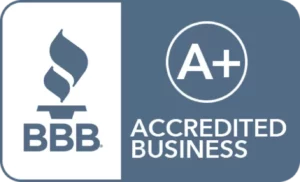Year-End Planning – Contribution Deadline
As we move closer to the new year, IRA holders have begun their IRA year-end retirement planning for 2020. It doesn’t matter what type of IRA you own, it’s very important to create a plan to meet your annual contributions. IRA contributions are advantageous for two important reasons:
- You receive a deduction if you have a pretax IRA, like the Traditional or Self-Directed IRA. As a result, this will lower your taxable income.
- The money you contribute into your IRA will grow tax-free until you take a qualified distribution. This is tax-deferral, also known as compounded return, and allows your money to grow faster than if you pay tax on income gains.
Traditional IRA & Roth IRA
The Traditional and Roth IRAs are two of the most popular individual retirement accounts. If you are worried that making a contribution will cut into your Holiday expenses, don’t. Participants of the Roth and Traditional IRA can wait until April 15 of next year to make a contribution. The contribution limit for both retirement accounts are $6,000 (under age 50) and $7,000 (age 50 and over) for 2020. The contribution limit for both the Traditional and Roth IRA will remain the same in 2021.
SEP IRA
The Simplified Employee Pension (SEP) IRA is a retirement plan for your business. As a result, you need to have a business to adopt the SEP IRA. The contribution is due by April 15 of 2021, or if you are afforded an extension, Oct 15 of 2021. The 2020 contribution limit for the SEP IRA will is $57,000, which will be increased to $58,000 in 2021.
Contributions to a SEP IRA are made by the employer and there is no employee deferral. Depending on the type of business you own, you may contribute up to 20% or 25% of the income generated by your business.
Simple IRA
The Savings Incentive Match Plans for Employees (SIMPLE) IRA is an employer-sponsored retirement plan. Contributions can be made as an employee and employer. As an employee, the contribution deadline for the SIMPLE IRA is on December 31. For the employer, the SIMPLE IRA is due April 12 of 2020. If you’re an employee, it’s very important not to make mistake your contribution date with the employer deadline, as you will miss out on contributing for the year.
The maximum amount you may contribute to a SIMPLE IRA is $13,500. If you are at least age 50, you may contribute another $3,000 for a total of $16,500. Remember, if you have a SIMPLE IRA for your business, you must contribute on each eligible employee’s behalf. You may choose a matching contribution of 3% or a flat 2% for your employees, whether they contribute or not.
Earned Income
You can open your retirement account at any local bank, if you only plan to make traditional investments. If you want to make alternative investments, such as real estate, you will need to establish your IRA at a special IRA Custodian, such as IRA Financial Trust. In order to open any type of individual retirement account, you will need to have earned income. In other words, you cannot only generate passive income if you wish to establish an IRA.
Let’s quickly review the differences between the two types of income:
Earned Income: Money you generate from paid work, such as wages, salary and tips.
Passive Income: Any income generated from an activity you are not actively involved in, such as rental income and capital gains.
Tax Deductions on Contributions
Most Traditional IRAs are tax-deductible because they are funded with pretax dollars. However, a Roth IRA, which is funded with after-tax dollars, are not tax-deductible. There are two factors when determining your tax deduction for a pretax IRA.
- Whether you have access to an employer-sponsored work plan, such as a 401(k)
- Your modified adjusted gross income (MAGI)
Access to a Work Plan
If you are an individual who has access to a work-sponsored retirement plan, such as the 401(k), but you also have a Traditional IRA, the IRA deduction depends on the amount of gross income you earned during the year, also known as the modified adjusted gross income.
Modified Adjusted Gross Income
Single filers who have a modified AGI of $65,000 can take a full deduction up to the amount of his or her contribution limit with a tradition account. The deduction decreases once you earn more than $65,000 as follows:
- More than $65,000 but less than $75,000: partial deduction.
- $75,000 or more: no deduction.
- If you are married and filing jointly, you can take a full deduction if your modified AGI is no greater than $104,000.
- More than $104,000 but less than $124,000: partial deduction.
- $124,000 or more: no deduction.
- If you are married, but filing separately, you must have a modified AGI of less than $10,000 to take a partial deduction. If you earn $10,000 or more, you will not receive a tax deduction.
CARES Act
If you have been affected by COVID-19 in any way, you are allowed penalty-free use of your retirement funds. So long as you can prove that you have suffered financially because of the virus, you are allowed to withdraw up to $100,000 from your IRA with no early withdrawal penalty. However, taxes on the amount distributed will need to be paid. You can pay them all at once, or spread them over three years. Plus, if you re-contribute those funds back into any retirement plan within the three years, you do not owe any taxes (and will be refunded any taxes paid out). Act fast, since this provision expires at the end of 2020!
One other positive aspect of the CARES Act is that no required minimum distributions are due in 2020. So if you are age 72 or over, your DO NOT have to take a withdrawal this year. Of course, you can if you need to!
If you have any questions, feel free to reach out to us @ 800.472.1043.











